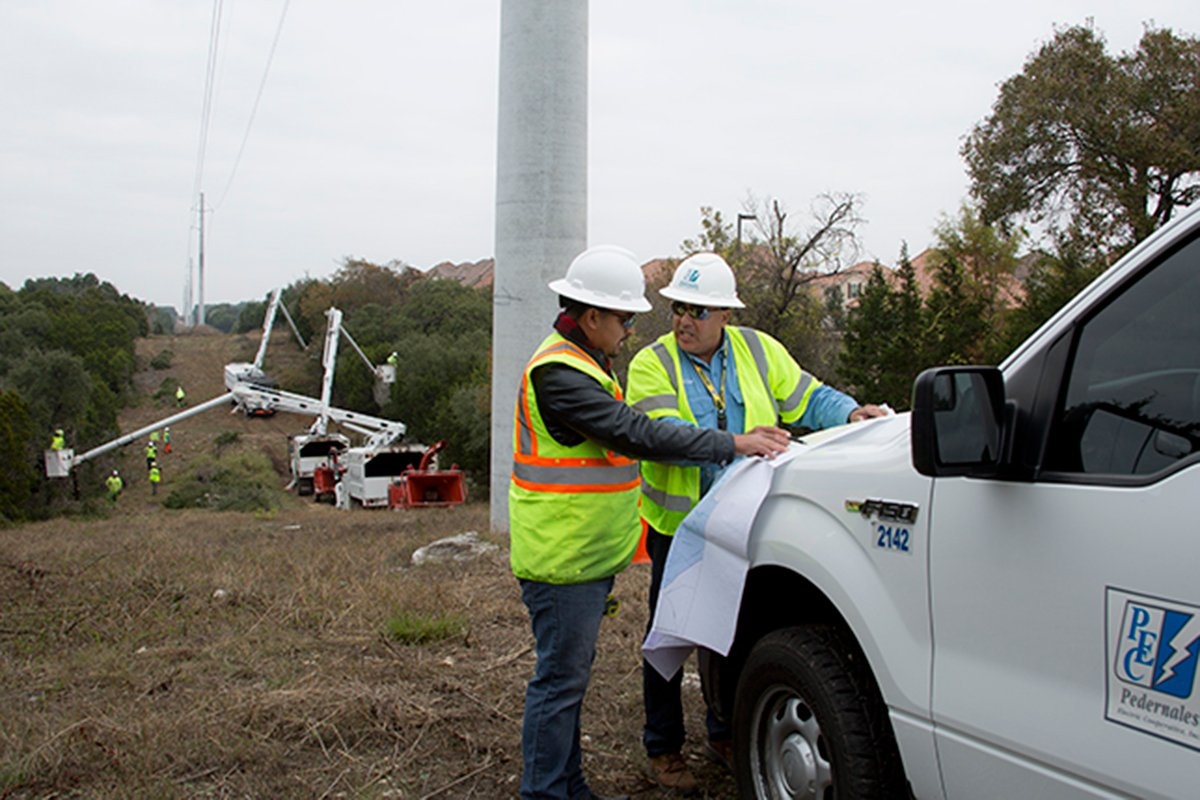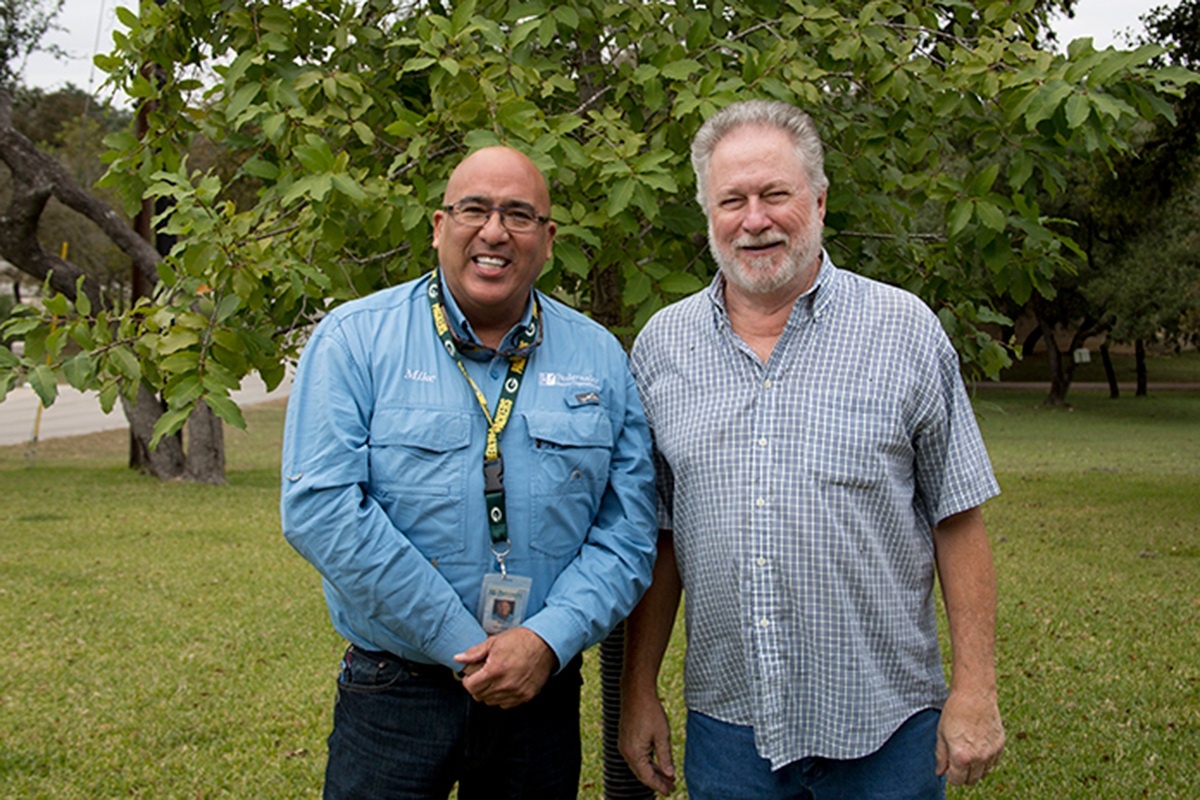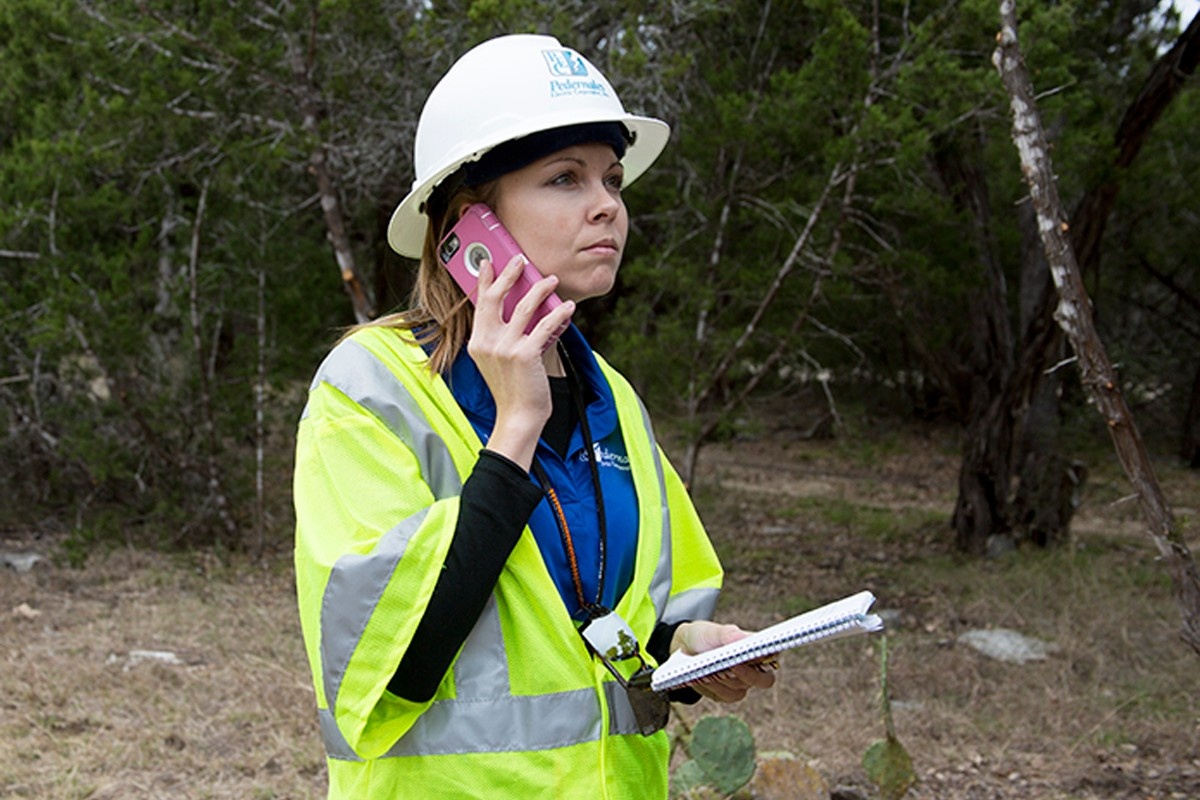It may seem like common sense math: trees plus power lines equal bad news.
But as PEC Vegetation Maintenance Manager George Leader explained, running a safe, successful vegetation management team involves a complex order of operations.
There’s member education: teaching our members the importance of “right tree, right place.”
There’s keeping up to date with standards and methods that protect against environmental threats to trees such as oak wilt, the emerald ash bore and invasive species, such as kudzu.
And then, of course, there’s coordinating efforts across our 8,100 square miles to keep tree limbs off power lines.
“Trees, when they touch power lines, can cause fires and outages, particularly in wet conditions,” Leader said. One wet tree limb in the wrong place can knock out power for hundreds of our members.
Young Department, Complex Roots
PEC has trimmed trees and cleared vegetation from electric equipment since the cooperative’s inception in 1938. But until last year, tree trimming was handled by our individual districts.
“There was nothing centralized, nothing standardized,” said Leader, who was asked to head up our first centralized vegetation management team in 2016. “Every district handled tree trimming differently. The first order of business was to get everyone on the same page.
“And up until this year, we only took care of the maintenance. This year, everything came from the districts to us: the budget, the service work … and it’s been a challenge. I went from having three people who were taking care of maintenance to having three people who were taking care of everything.”
Going Out on a Limb: Being Proactive
But our Vegetation Maintenance team embraced the challenge. Part of their success has come from taking a proactive rather than reactive approach.
“Being reactive is going out there and chasing tree problems,” Leader explained. “Being proactive is getting out and trimming trees before they become a problem — being ahead of the game.”
Several recent innovations have helped Vegetation Maintenance’s proactive approach to flourish:
Keeping things trim: workflow changes and efficiencies
Leader identified PEC Vegetation Maintenance Supervisor Ryan Krause as one of the team’s major architects of efficiency.
Krause came to the team from a background as a journeyworker, and his unique perspective enabled him to approach vegetation procedures from a fresh angle. He noticed that our utility foresters were inundated with paperwork and were sometimes assigned to geographic districts that required them to drive long distances.
“They really needed someone to come in and take over the paperwork temporarily, so they could focus on what they do in the field,” Krause said. He also reallocated the foresters’ assignments, placing more foresters in areas with the highest volume of service orders, and assigned foresters to cover areas closer to their homes to cut down driving times.
These changes allowed foresters to spend more time with boots on the ground, doing the work that directly affects the member. The bottom line?
“We’re trying to minimize the amount of time it takes for a service order to be completed,” Krause said.
Two years ago, Vegetation Maintenance Supervisor Nina Alexander and Utility Forester Mike Ayala introduced a program that simultaneously increased our member satisfaction and potentially saves the cooperative tens of thousands of dollars: a tree replacement program.
Leader described the exchange: “When we have a member that will allow us to remove a tree out from underneath a line, we’ll plant them a new tree” in a safe place, away from power lines.
This saves years of trimming and maintenance down the line, and participating members are given their choice of a brand-new, beautiful 35-gallon hardwood the team plants and fertilizes.
“It works out really well,” Leader said, “and it makes our members happy.”
Eye in the sky
Tree trimming may be as old as the cooperative, but now it’s getting a boost from brand new technology. Our new small unmanned aircraft, flown by PEC Technical Services Supervisor Eric Bitzko, allows his department to get ahead of the game by scanning lines and identifying hotspots from the air.
“Inspecting lines by air is faster, cheaper and less intrusive than using boots on the ground,” Bitzko said in an Oct 31 Energy News story. “Instead of PEC crews and contractors knocking on doors and entering backyards one by one, we can fly our [unmanned aerial system] along our easements to identify areas that need tree trimming.”
G(r)o(w)ing forward
As part of its proactive approach, the team is also looking to incorporate new technologies in the future that monitor rainfall, analyze plant species and produce growth predictions. This data can be used to produce a far-seeing vegetation management strategy, resulting in a sleek, effective team, decreased outages and savings for our members.
Solid Heart
The real secret behind Vegetation Maintenance’s flourishing these past years, said Leader, isn’t fancy technology. It’s the people.
Leader glowed with pride as he discussed the men and women who work with him: Nina Alexander, Ryan Krause, Mike Ayala and utility foresters Maria Gonzalez, Penny Whisenant, John Fortune, Matt Austin and Scott Lindquist.
“I’m proud of the team that I have,” Krause said. “I’m in awe. They really know what they’re doing.”
“They’re conscientious,” Leader said, calling his team members men and women “of honor and integrity.”
“With a team like that,” he added, “there’s nothing we can’t accomplish.”




